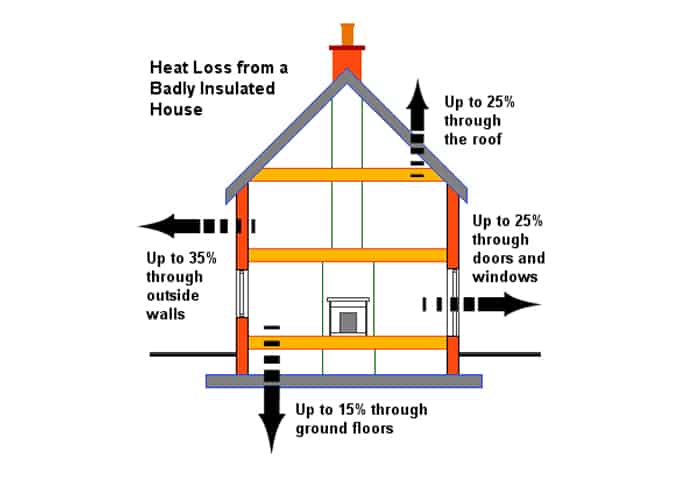BLOG
INTERESTING STUFF
THAT CAUGHT OUR EYE
Is Your Period Property Freezing? We can Fix It

We love period properties. Their elegance and sturdiness have secured their place on our streets and they are essential to the character of our towns and cities. But it can be much harder to enjoy them in winter, when cold winds waste no time exposing every gap in the floorboards and every uninsulated wall.
For our clients, this yearly chill means more than discomfort and high heating bills: there’s an intense psychological impact to living in a cold house. They feel demotivated and stressed when they’re unable to enjoy their home, which is supposed to be a space to recover after a hard day at work – and this discomfort turns dangerous when the very young or elderly are concerned.
This is why, when we renovate a period home, improving its thermal performance is just as important as re-beautifying it.
Here are the top causes of heat loss in period properties and how we get rid them.
Floorboards
Victorian and Edwardian house builders were far more concerned with keeping damp out than keeping warmth in. Most period properties are raised above the ground, creating a void space beneath the floorboards that prevents moisture from the earth spreading up into the home, while air bricks allowed wind to pass through the void and carry out the damp.
Unfortunately, the breeze that keeps the void space dry also blows up through the floorboards. By sealing any gaps between floorboards and installing insulation at ground level, we can prevent cold air creeping in and warmth escaping below.
Doors and Windows
The other main sources of neck-nagging drafts are doors and windows. Doors can be improved relatively easily by installing seals and brushes, but windows are more of a challenge. Period single glazed windows are cold to the touch, are often dripping with condensation and let air pass through gaps in their timber frames.
It’s common knowledge how much of an improvement double or even triple glazed windows provide but traditional timber framed windows are often protected in conservation areas and even more so in listed buildings.
Luckily, period replications known as conservation windows keep the style of traditional frames despite using double glazed panes and are often a must if you want to get your period renovation approved in a protected area.
Walls and Roof
In the 40s and 50s, walls started to be built out of two separate layers of bricks or blocks, with an empty space in between to prevent heat passing through, which can also easily be filled with insulation. Period homes, however, have solid brick walls, so the insulation needs to cover the inside of the wall – which becomes an issue when dealing with listed buildings.
While some heat escapes through the sides, most heat travels upwards, which is why bedrooms are traditionally in the upper floors of a house, above the heat-generating living room and kitchen. Unfortunately, the heat doesn’t stop there, it continues up into the loft and then out into the atmosphere.
Like the void space beneath a house, lofts were deliberately designed to allow air to pass through and remove moisture, this time via gaps in the roof known as eaves. Combine this with nothing but a thin layer of tiles separating the interior from exterior and you end up with a loft that’s absolutely freezing in winter.
With an uninhabited loft, you can place insulation between the floors to prevent heat escaping from the rooms below. If you’re converting the loft things become more complicated, as you need to insulate the space while also allowing enough ventilation to prevent condensation. Damp is the telltale sign of an amateur loft extension, and can lead to severe structural issues.
Winter Without the Shivers
If you can’t imagine leaving your period home but can’t bear another winter doubling up your socks and jumpers, call us today on 020 8108 3612 to find out how you can enjoy all the warmth of a modern home without giving up what makes yours so special. You can also browse our portfolio to see period properties that feel as good as they look.
John Dyer-Grimes
